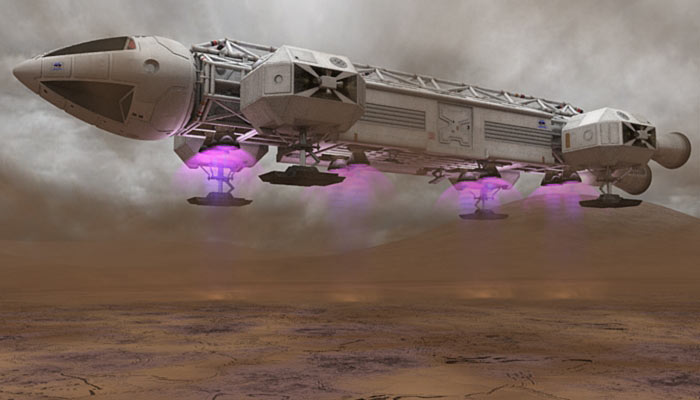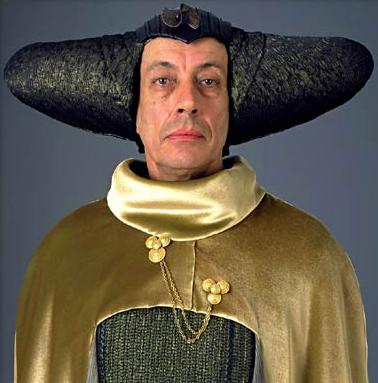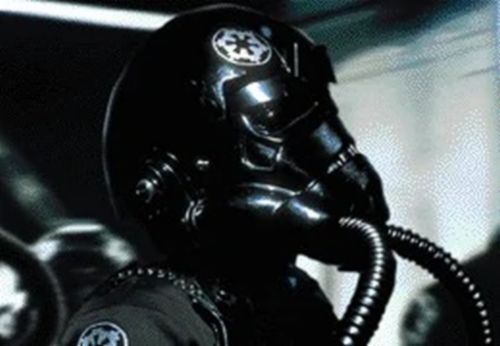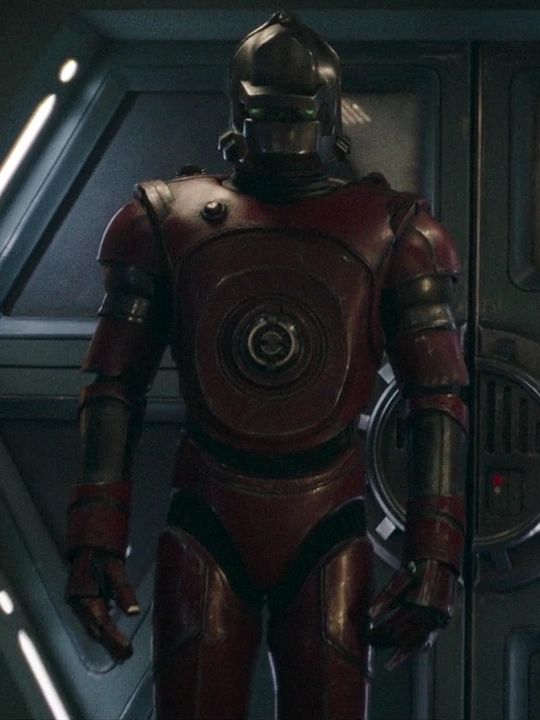 Eagle Transport
Craft: Moon Base Alpha Eagle Transport
Type: Modular Transport Craft
Scale: Starfighter
Length: 40 meters
Skill: Space Transport Piloting
Crew: 1, gunner: 1
Crew Skill: varies widely
Passengers: 2 (see below)
Cargo Capacity: 10 metric tons (see below)
Consumables: 1 week
Cost: 150,000 (new), 40,000 (used)
Hyperdrive: x2 (Backup: x15)
Nav Computer: Yes
Maneuverability: 1D
Speed: 6
Hull: 5D
Shields: 1D
Sensors:
Passive: 15/0D
Scan: 25/1D
Search: 40/2D
Focus: 2/2D+2
EXTRA EQUIPMENT MODULES (see below)
WEAPONS
Laser Gun (optional)
Location: Forward hull
Fire Arc: Front
Crew: 1 (pilot or co-pilot)
Skill: Starship Gunnery
Scale: Starfighter
Fire Control: 2D
Space Range: 1-3/12/24
Atmosphere Range: 50-300/1.2/2.4km
Damage: 5D
Ammo: N/A
Rate of Fire: 1
Laser Turret (optional)
Location: Mounted on top hull
Fire Arc: Turret
Crew: 1 (co-polot)
Skill: Starship Gunnery
Scale: Starfighter
Fire Control: 2D
Space Range: 1-3/12/24
Atmosphere Range: 50-300/1.2/2.4km
Damage: 5D
Ammo: N/A
Rate of Fire: 1
Space Missiles
Location: Mounted in forward hull
Fire Arc: Front
Crew: 1 (co-pilot)
Skill: Missile Weapons
Scale: Statfighter
Fire Control: 1D
Space Range: 1/3/7
Atmosphere Range: 50-100/300/700m
Damage: 7D
Ammo: 8
Rate of Fire: 1
DESCRIPTION:
The Eagle Transporter is a fictional spacecraft and the iconic image of the 1970s television series Space: 1999. The Eagles serve as the primary spacecraft of Moonbase Alpha, which has a fleet of them. The Eagles are primarily used to explore alien planets, defend Moonbase Alpha from attack, and to transport supplies and other items to and from the Moon. The Eagle was designed by Brian Johnson; his design was clearly influenced by the 1968 film 2001: A Space Odyssey. In turn, the Eagle spacecraft influenced the spaceship designs of Star Wars and other science fiction films and television series.
CONSTRUCTION
The Eagles are constructed by the engineering and technical section of Moonbase Alpha using materials and components either shipped from Earth or manufactured on the Moon. The latter is usually proposed as a rationale for the perceived seemingly endless supply of Eagles despite their frequent losses.
DESIGN
Completely modular, the craft are divided into three basic sections: the command module, the service pod, and the superstructure (containing the landing gear, access corridor, aft compartment and main propulsion system). The command module also has an escape hatch as revealed in the episode Devil's Planet, although it is unknown whether this is an original design feature or an adaptation that was designed by Moonbase Alpha. As noted below, all Eagles are equipped with artificial gravity.
TYPES of EAGLE
Several types could be used, depending on the mission:
-Passenger: The standard passenger module, it is usually unarmed and used solely to transport Moonbase personnel. Passenger Eagles have a transport module which provides maximum seating space. These Eagles were first seen in the episode Breakaway.
Passengers: 40
-Recon: Sometimes known as Survey Eagles, this type typically has a computer bank on the starboard side of the ship. Recon Eagles are used to explore alien planets and regions of space; the sophisticated computer bank is used to obtain, store, and analyse data gathered from the planet being studied including contents of atmosphere, valuable minerals or resources and life signs.
Sensors:
Passive: 25/0D
Scan: 50/1D
Search: 75/2D
Focus: 3/3D
-VIP Eagle: Seen only in the episode Breakaway, the orange VIP Eagle was used by Lunar Commissioner Gerald Simmonds; it is primarily a passenger Eagle used to transport high-ranking officials.
-Rescue Eagles: These Eagles are recognisable by their vertical red stripes. Rescue Eagles are equipped with a variety of rescue and life-saving equipment which can be used in emergencies.
These Eagles will have space suits, cutters and explosive charges of different sorts, salvage and heavy lifting gear, as well as first aid and other medical equipment.
-Transport/Supply Eagles: These Eagles are used to transport supplies and equipment rather than passengers. Their transport modules are designed to carry equipment and have limited seating space for passengers.
Cargo Capacity: 400 metric tons
-Docking Eagle: Usually a standard Eagle fitted with an extendable airlock to enable docking with another craft in space. This was seen in the episode Collision Course when John Koenig had to dock with Alan Carter's damaged Eagle.
-Freighter Eagle: These specialized Eagles are used to transport dangerous nuclear waste to Nuclear Disposal Areas 1 & 2; unlike supply or transport Eagles they are heavily shielded to protect their crews from radiation. The waste canisters are carried in a 'pallet' type pod which links to a conveyor belt at the disposal areas. These Eagles were seen in the episode Breakaway.
-Laboratory Eagles: A specialized Eagle which carries equipment of a more scientific nature than the Recon Eagle, they are usually fitted with additional airlocks for decontamination purposes, and appear to have small but well-equipped laboratories on board. These Eagles appear throughout the series, but make their first prominent appearance in the second season premiere The Metamorph.
-Winch: Winch pods can be attached to Eagles and used for a variety of purposes. Most notably they were used to attempt to disperse the nuclear waste containers in Disposal Area 2 in Breakaway. They are not to be confused with Freighter Eagles. Winch pods can be either in the form of a grab, as seen in Collision Course when Nuclear charges were planted on an asteroid, or a magnetic winch, used for other purposes like removing the Command module of a crashed Eagle in Missing Link.
To use the winches, use the skills Space Transports Piloting and Missile Weapons.
-Fighters: Although Eagles are not primarily designed for combat, they can be equipped with laser cannon and missiles for defensive purposes. When Moonbase Alpha broke away from Earth, several Eagles were equipped with weapons and used to defend the Moonbase from potential alien attacks. Specialised Eagles were designated as 'Combat Eagles' in The Metamorph.
EAGLE EQUIPMENT
Several types of equipment could be attached to an Eagle, depending on the mission:
-Winches: range of 1-2/5/10.
-Docking tube
-Top boosters: Speed +1, Maneuverability+1D.
-Side boosters: Speed +1, Maneuverability +1D
-Vertical grab
-Horizontal grab
-Harness
-Re-entry glider
-Refuelling boom
-Top mounted retractable laser cannon: Starfighter scale, Range 1-3/12/24, Fire Control 2D, Damage 5D
-Moonbuggy
OPERATION
The Eagles are powered by four nuclear fusion rockets and carry fuel reserves for 48 hours of flight. Artificial gravity force fields built into the Eagle enable it to accelerate up to 15% of the speed of light, giving it a maximum range (with extra fuel reserves) of several light days.
The Eagle also has the capability to enter the atmosphere of a normal-gravity planet and then land using its chemically-fuelled landing rockets, and take off and return to Moonbase Alpha.
The on-board computer system can handle guidance, astro navigation and interpretation of sensor data; it can even be flown using remote control from Moonbase Alpha and guided safely down for a landing.
WEAPONS
Although the Eagle was not designed for use as a military vessel, some Eagles on Moonbase Alpha are fitted with a laser gun as standard equipment and an arsenal of space-to-space missiles. However the episode War Games suggests that only some of Alpha's many Eagles are armed. It is suggested in the series that Eagles were mainly designed for transport, reconnaissance, and scientific surveys. In the episode War Games the Eagles are badly outmatched by the Mark IX Hawk, which were designed specifically for combat. The Hawks were faster, more maneuverable, and better-armed than the Eagles, although a skilled Eagle pilot such as Alan Carter was still able to destroy several Hawks in the battle to defend Moonbase Alpha.
In addition to weapons mounted on the Eagles, various pods carry a rack of stun guns and a single laser rifle for the use of crew.
CREW
Eagles are piloted by an astronaut (Eagle Pilot) with a rank of no less than Captain. Although the Eagle can easily be handled by a single Eagle Pilot, the right seat in the Eagle cockpit is routinely occupied by a co-pilot, although this varies according to mission profile.
WRITE-UP NOTES:
The stats given above are for using the Eagles in a Star Wars RPG setting. If the GM/players wish to use a more canon version of the ship, then the shields and hyperdrive are not present.
However, it should be noted that they have acceleration up to .5 the speed of light. While that is no substitue for real FTL, it does mean that they can fly very fast. The above speed should be treated as a standard combat speed, where they slow down to be able to see and interact with other objects or people, and especially for fighting purposes. If they ever have a need to run, they simply accelerate to full speed and immediately leave the area. this would probably look visually like a ship jumping into hyperspace, as they always stretch into acceleration when they do so. But instead, they are accelerating to real-time speeds that escape the human eye. this could be used in Star Wars to fool everyone else in the galaxy into thinking these ships have hyperdrives when they really don't.
|












